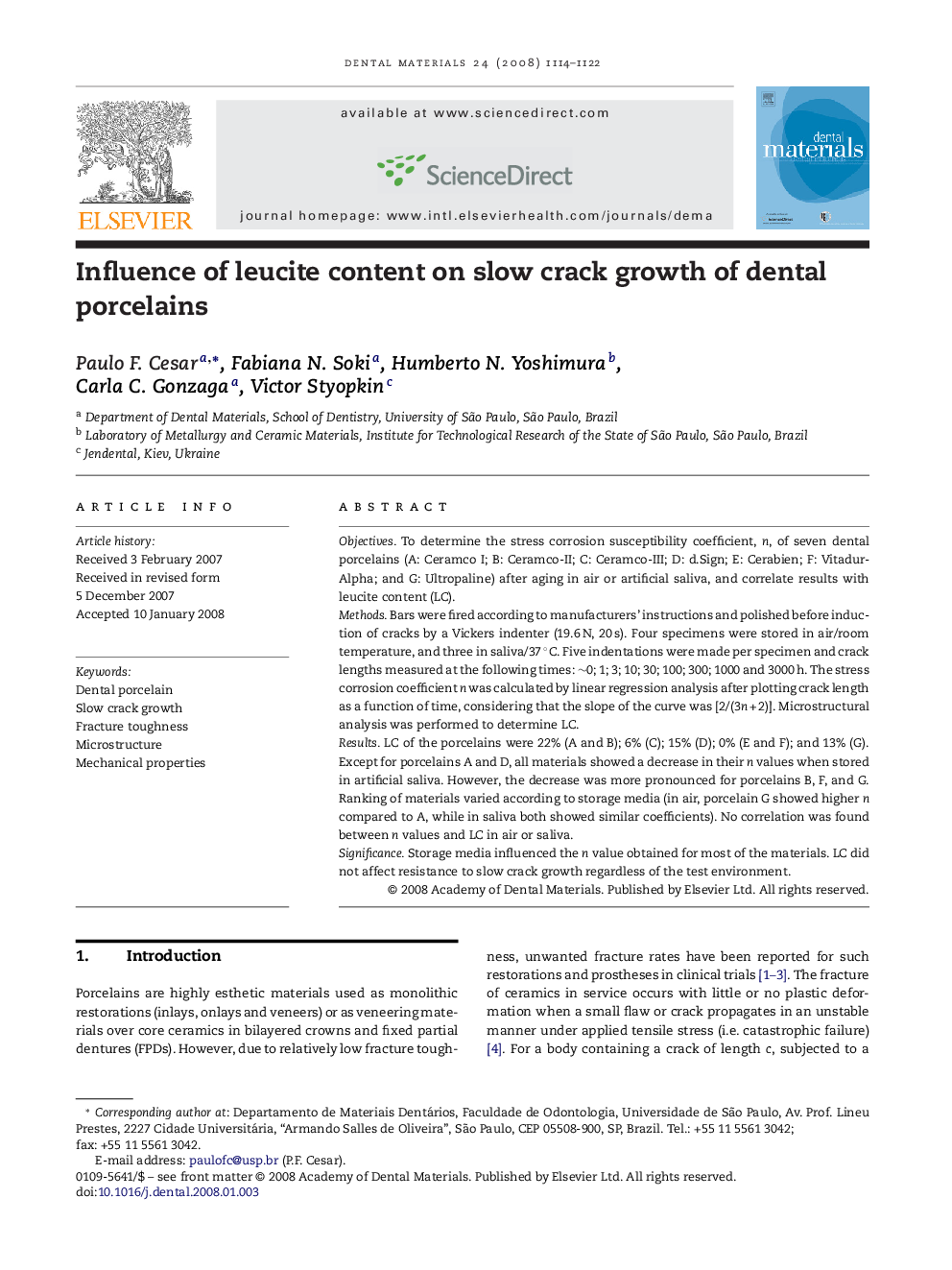| Article ID | Journal | Published Year | Pages | File Type |
|---|---|---|---|---|
| 1422765 | Dental Materials | 2008 | 9 Pages |
ObjectivesTo determine the stress corrosion susceptibility coefficient, n, of seven dental porcelains (A: Ceramco I; B: Ceramco-II; C: Ceramco-III; D: d.Sign; E: Cerabien; F: Vitadur-Alpha; and G: Ultropaline) after aging in air or artificial saliva, and correlate results with leucite content (LC).MethodsBars were fired according to manufacturers’ instructions and polished before induction of cracks by a Vickers indenter (19.6 N, 20 s). Four specimens were stored in air/room temperature, and three in saliva/37 °C. Five indentations were made per specimen and crack lengths measured at the following times: ∼0; 1; 3; 10; 30; 100; 300; 1000 and 3000 h. The stress corrosion coefficient n was calculated by linear regression analysis after plotting crack length as a function of time, considering that the slope of the curve was [2/(3n + 2)]. Microstructural analysis was performed to determine LC.ResultsLC of the porcelains were 22% (A and B); 6% (C); 15% (D); 0% (E and F); and 13% (G). Except for porcelains A and D, all materials showed a decrease in their n values when stored in artificial saliva. However, the decrease was more pronounced for porcelains B, F, and G. Ranking of materials varied according to storage media (in air, porcelain G showed higher n compared to A, while in saliva both showed similar coefficients). No correlation was found between n values and LC in air or saliva.SignificanceStorage media influenced the n value obtained for most of the materials. LC did not affect resistance to slow crack growth regardless of the test environment.
